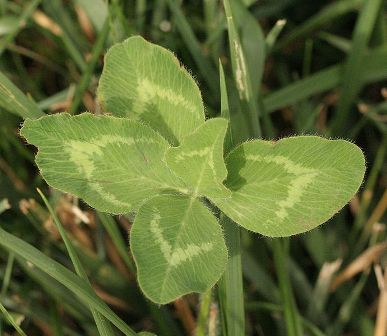- Series:Plants, Transcript English
1 Timothy 4:7
“But refuse profane and old wives’ fables, and exercise thyself [rather] unto godliness.”
The clover family of plants is a large family with members all over the world. Members of this family have many forms, from the white and purple clovers that grow in the lawn to the impressive acacia and mimosa trees. However, most types of clovers live in North America.
 White and sweet clovers are particularly popular with honeybees and other pollinating insects. The sugar content of the nectar produced by these clovers is 40 percent – about four times higher than popular soft drinks. Clover is also well known for its ability to restore the soil. Symbiotic bacteria in root nodules are able to fix nitrogen, which is abundant in the atmosphere, into the soil.
White and sweet clovers are particularly popular with honeybees and other pollinating insects. The sugar content of the nectar produced by these clovers is 40 percent – about four times higher than popular soft drinks. Clover is also well known for its ability to restore the soil. Symbiotic bacteria in root nodules are able to fix nitrogen, which is abundant in the atmosphere, into the soil.
Ever since the days of Tom Sawyer, and probably before, young boys have looked for four-leaf clovers. Superstition says it is good luck to find a four-leaf clover. Since God is completely in charge of every detail of the creation, there is, of course, no such thing as luck. Four-leaf clovers do present an interesting variation on the usual three-leaf clover. They are fairly simple to find if you know the trick. The principle behind that trick is not luck, but genetics. You are most likely to find a four-leaf clover in a patch of clover where the leaves are not evenly shaped in the normal way. When you find a four-leaf clover in the patch, keep looking because there are probably more.
Clover has been designed by the Creator to serve man in many ways. Luck had nothing to do with it.
Prayer:
I thank You, Lord, that You have not abandoned us to be the victims of luck and blind chance. Forgive me for the times that I have thought as the world does about luck and help me to see more clearly Your involvement in my life. Amen.
Notes:
Steven D. Garber. 1987. The Urban Naturalist. Pp. 22-25. Photo: A five-leaf clover! Courtesy of Megan McCarty. Licensed under the Creative Commons Attribution-Share Alike 3.0 Unported license.
